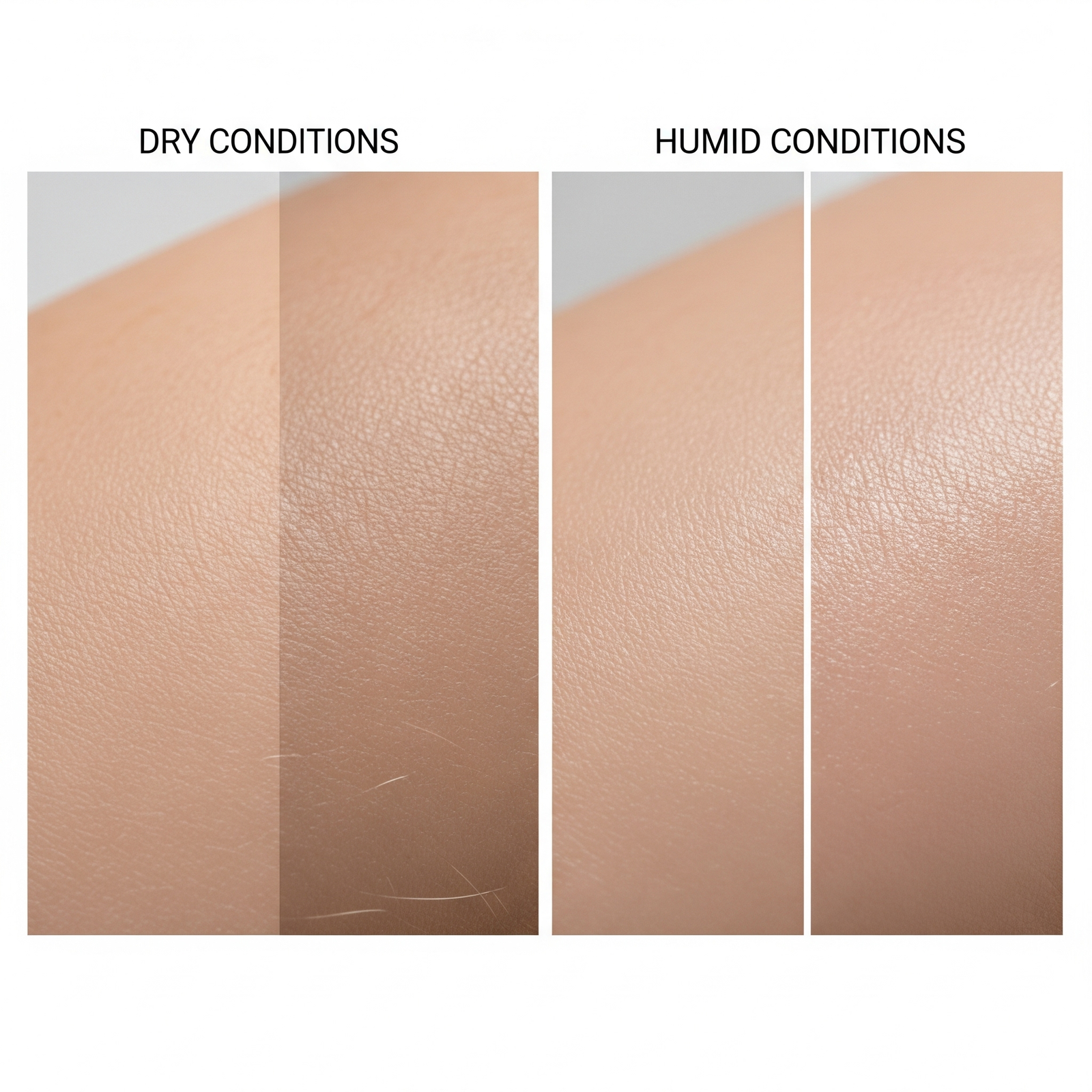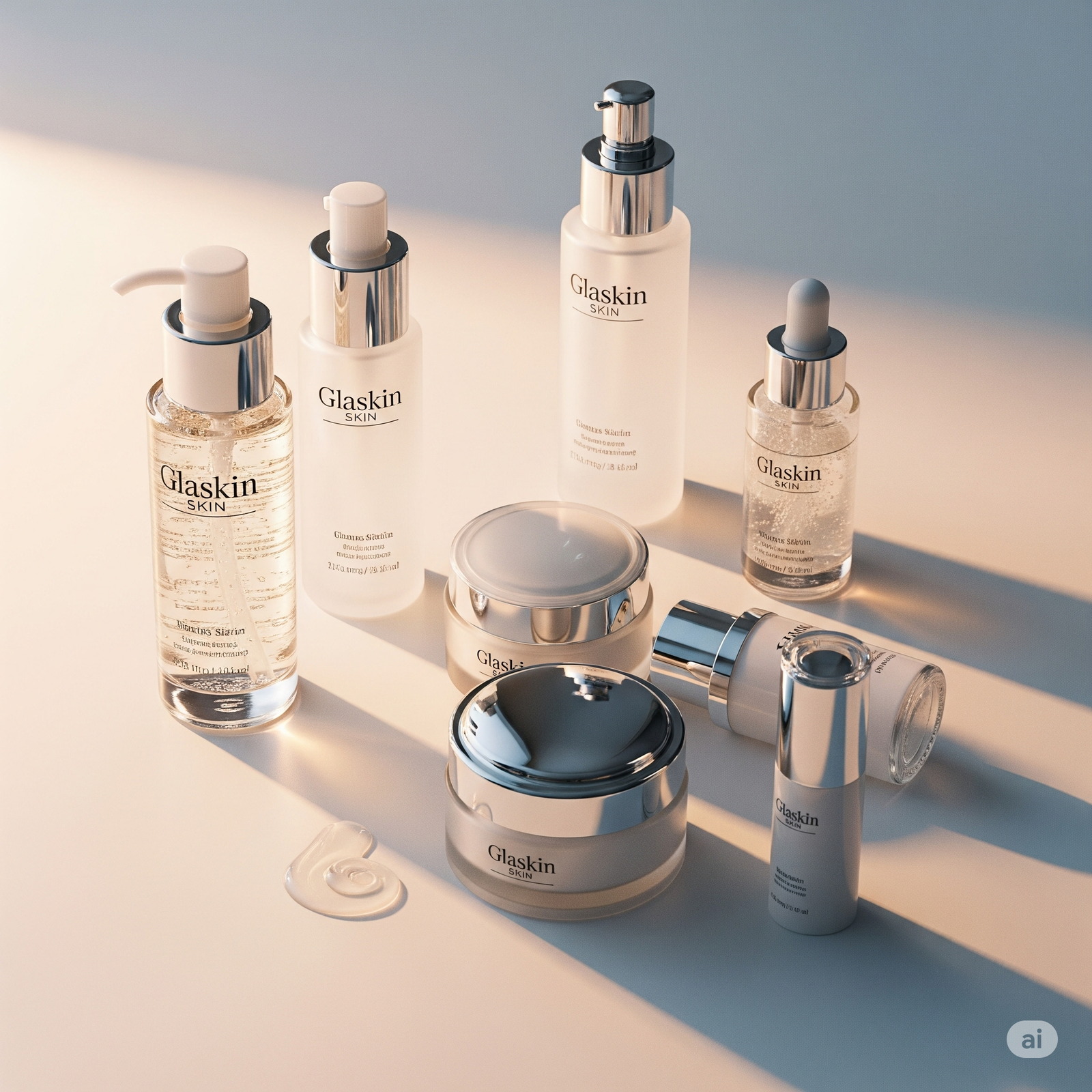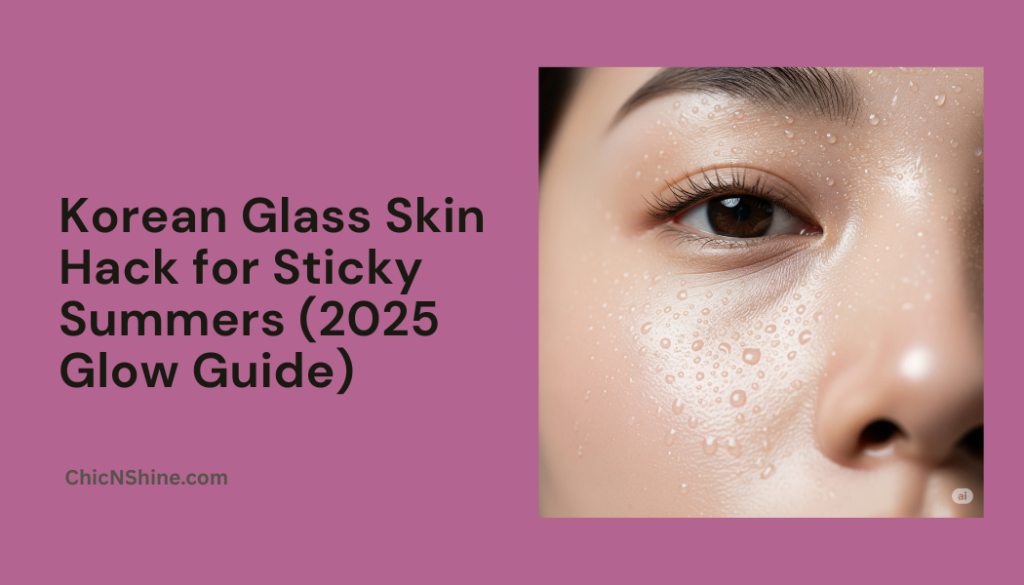I used to think achieving the coveted Korean glass skin look was impossible in my city’s suffocating summer humidity, but I was completely wrong about how to approach a glass skin routine for humid climates. After years of struggling with clogged pores, excessive shine, and makeup that melted off within hours, I discovered that the secret wasn’t avoiding hydration in humid weather – it was about strategically layering lightweight, climate-appropriate products that work with your environment rather than against it. The breakthrough came when I realized that humid weather provides natural moisture that you can harness to achieve that coveted glass-like finish, but only if you know how to balance hydration with proper oil control and pore management.
Living in a humid climate taught me that traditional Western skincare approaches often fail because they don’t account for environmental factors that dramatically impact how products perform on your skin. However, Korean beauty philosophy embraces the concept of working with your skin’s natural processes and environmental conditions, which makes it perfectly suited for humid climates. The key to mastering a glass skin routine for humid climates lies in understanding how moisture levels affect product absorption, sebum production, and overall skin behavior, then adapting your routine accordingly to achieve that signature Korean glow without the greasy aftermath.
Understanding Your Skin in Humid Conditions
Before diving into specific products and techniques, I had to completely reframe my understanding of how humidity affects skin behavior. Climate has a direct effect on how your skin looks and behaves, with complexion becoming oily when it’s hot and humid outside, but this doesn’t mean you should strip your skin of all moisture. Instead, I learned that humid air helps maintain your skin’s natural moisture barrier, which means you can achieve that coveted glass skin dewiness with lighter, more strategic product application.
The game-changer was realizing that in humid conditions, your skin produces more natural oils as a protective response to environmental stress, not necessarily because it’s “oily skin.” This insight completely transformed my approach to skincare – instead of fighting against my skin’s natural responses with harsh, oil-stripping products, I started working with these processes to achieve better results. Moreover, I discovered that the epidermis cools down or warms up depending on the climate’s temperature, which means your skin’s needs change based on weather conditions, requiring a more adaptive approach to skincare.

The Morning Routine That Works
My morning glass skin routine for humid climates starts with a gentle, pH-balanced cleanser that removes overnight buildup without stripping essential oils. I discovered that over-cleansing in humid weather triggers more oil production, so I use a lightweight foam or gel cleanser that maintains my skin’s natural balance while preparing it for the day ahead. The key is choosing products with ingredients like green tea or rice water that provide gentle cleansing while offering antioxidant protection against environmental stressors.
After cleansing, I apply a lightweight, hydrating toner that contains hyaluronic acid or glycerin – ingredients that attract moisture from the humid air and lock it into my skin. This step is crucial because it creates the foundation for that glass skin dewiness while ensuring my skin stays properly hydrated throughout the day. I then follow with a thin layer of niacinamide serum, which has become my secret weapon for controlling excess oil production while maintaining the healthy glow that defines glass skin. The niacinamide helps regulate sebum production without making my skin look matte or flat, which is essential for achieving that signature Korean luminosity.
The final morning steps involve a lightweight moisturizer with SPF because sun protection is non-negotiable for maintaining healthy, glass-like skin. I choose formulas that provide broad-spectrum protection while enhancing my skin’s natural radiance rather than creating a white cast or heavy feel. Additionally, I’ve learned to apply products in thin, even layers and allow each step to fully absorb before adding the next, which prevents the dreaded pilling effect that can occur in humid conditions.
Mastering the Evening Transformation
The evening is when the real magic happens in my glass skin routine for humid climates because this is when I can focus on deeper hydration and skin repair without worrying about makeup longevity or environmental factors. I start with a thorough double cleanse – first with a lightweight cleansing oil to remove sunscreen and any remaining makeup, followed by a gentle foam cleanser to ensure my skin is completely clean. This two-step process is essential in humid climates because it removes all traces of sweat, oil, and environmental pollutants that accumulate throughout the day.
My evening routine includes more intensive hydrating products that might feel too heavy for daytime wear in humid conditions. I use a hydrating essence or first treatment essence, which provides deep moisture while preparing my skin for subsequent products. This is followed by a vitamin C serum (applied only at night to avoid photosensitivity) and a more substantial moisturizer that works overnight to repair and nourish my skin. The key is layering these products gradually, allowing each to absorb fully before applying the next, which prevents the sticky, uncomfortable feeling that can occur when products don’t properly penetrate humid skin.

The Weekly Treatments That Make a Difference
Consistency in weekly treatments has been crucial for maintaining my glass skin results in humid weather. I incorporate a gentle exfoliation treatment twice weekly using a chemical exfoliant with BHA or AHA, which helps remove dead skin cells and prevent the clogged pores that are common in humid climates. However, I’ve learned to be more conservative with exfoliation frequency during particularly humid periods, as over-exfoliation can increase oil production and inflammation.
My weekly routine also includes hydrating sheet masks, which work particularly well in humid climates because the environmental moisture helps enhance product absorption. Koreans swear by overnight masks, which seal in hydration while you sleep, and I’ve found that using these once or twice weekly helps maintain that glass skin dewiness even during the most challenging humid days. I choose masks with ingredients like snail mucin, hyaluronic acid, or ceramides that provide intense hydration without clogging pores.
Additionally, I’ve incorporated a weekly clay mask treatment to help manage the increased oil production that comes with humid weather. The key is choosing gentle clay formulas that purify without over-drying, followed immediately by a hydrating treatment to restore moisture balance. This combination approach ensures that my skin stays clear and refined while maintaining the healthy glow that defines glass skin.
[ Affiliate Link: Korean Weekly Treatment Masks for Humid Weather ]
Product Layering Secrets for Humid Weather
The art of product layering in humid climates requires a completely different approach than standard recommendations, and mastering this technique was crucial for achieving consistent glass skin results. I learned to apply products in thinner layers with longer absorption times between each step, which prevents the buildup that can make skin feel sticky or uncomfortable in humid conditions. The rule I follow is “less is more” – using smaller amounts of product applied more strategically rather than thick, heavy layers that can’t properly absorb.
Temperature also plays a crucial role in product application during humid weather. I store my toners and essences in the refrigerator during peak summer months, which not only feels refreshing on hot, sticky skin but also helps products absorb more effectively. The cooling effect helps constrict pores temporarily, creating a smoother canvas for subsequent product application. Moreover, I’ve discovered that applying products to slightly damp skin enhances absorption and helps achieve that dewy glass skin finish more easily in humid conditions.
Timing is everything when layering products in humid weather. I allow at least 30 seconds between each step, sometimes longer for heavier products, and I use gentle patting motions rather than rubbing to help products penetrate without disrupting the skin’s natural moisture barrier. This patience has been essential for preventing the pilling, stickiness, and ineffective product absorption that previously plagued my humid weather skincare routine.
Troubleshooting Common Humid Weather Challenges
One of the biggest challenges I faced while perfecting my glass skin routine for humid climates was dealing with unexpected breakouts and increased oil production. I learned that these issues often stem from using products that are too heavy for the climate or not properly cleansing to remove sweat and environmental pollutants. The solution was adjusting my routine seasonally, using lighter formulations during peak humidity and gradually transitioning to more intensive products as weather conditions change.
Another common issue is makeup not setting properly over glass skin products in humid weather. I discovered that using a lightweight, mattifying primer only in my T-zone while keeping the rest of my face dewy creates the perfect balance for makeup application. Additionally, setting sprays with humidity-resistant formulas helps lock in both my skincare and makeup while maintaining that glass skin glow throughout the day.
Pore congestion became less of an issue once I started incorporating regular gentle exfoliation and ensuring complete product removal during cleansing. I also learned to recognize when my skin needs a break from heavy hydrating products, switching to lighter alternatives during particularly humid periods. This flexibility has been key to maintaining healthy, glass-like skin year-round.

Ingredients That Thrive in Humidity
Understanding which ingredients work best in humid climates has been crucial for curating an effective glass skin routine. Hyaluronic acid becomes even more powerful in humid conditions because it can draw moisture from the environment, making it an essential ingredient for achieving that plump, dewy glass skin look. However, I’ve learned to use it in lighter concentrations during peak humidity to avoid over-hydration that can lead to breakouts or irritation.
Niacinamide has become my holy grail ingredient for humid weather because it regulates oil production while maintaining skin hydration and improving overall texture. Green tea water and rice-based ingredients deliver intensive hydration and antioxidant protection, making them perfect for humid climate routines. These ingredients work synergistically with environmental moisture to enhance the glass skin effect without causing congestion or excessive oiliness.
Ceramides and peptides also perform exceptionally well in humid conditions, helping to strengthen the skin barrier while providing anti-aging benefits. I’ve found that products containing these ingredients help my skin maintain its glass-like appearance even during the most challenging humid days. Additionally, gentle acids like lactic acid work well for regular exfoliation without over-drying skin that’s already dealing with environmental stress.
[ Affiliate Link: Humid Weather Skincare Ingredients Collection ]
Adapting Your Routine Throughout the Day
Living in a humid climate taught me that skincare isn’t a one-and-done morning routine – it requires strategic touch-ups and adjustments throughout the day. I keep a facial mist with hydrating ingredients in my bag for midday refreshing, which helps maintain that glass skin dewiness without disrupting makeup. The key is choosing mists that enhance rather than dilute your existing products, creating a seamless boost to your glass skin look.
During particularly humid days, I’ve learned to blot excess oil gently with blotting papers rather than adding more powder, which can create a cakey appearance that’s the opposite of glass skin. Instead, I use a light dusting of translucent powder only where needed, followed by a setting spray to restore that dewy finish. This approach maintains a healthy glow while preventing the excessive shine that can occur in humid conditions.
Evening adjustments are equally important – on days when the humidity has been particularly high, I might skip my heaviest moisturizer or use a lighter alternative to prevent overnight congestion. I’ve also learned to adjust my morning routine based on how my skin feels when I wake up, sometimes using a gentler cleanser or skipping certain steps if my skin feels oversaturated from environmental moisture.
The Long-Term Results
After consistently following my adapted glass skin routine for humid climates for over a year, the transformation in my skin’s appearance and behavior has been remarkable. My skin has developed a natural resilience to humidity fluctuations, maintaining its glass-like clarity and dewiness even during the most challenging weather conditions. The key has been patience and consistency, allowing my skin to adapt to the routine while making minor adjustments based on seasonal and daily variations.
The most significant change has been in my skin’s texture and overall health. Regular hydration and gentle exfoliation have minimized pore appearance while enhancing my skin’s natural radiance. Additionally, my skin has become less reactive to environmental stressors, maintaining its calm, clear appearance even during humid weather that previously triggered breakouts and irritation.

Common Questions About Glass Skin in Humid Weather
What's the biggest mistake people make when trying glass skin in humid weather?
Over-hydrating is the most common mistake. Many people think they need to use heavy products to achieve a dewy look, but in humid climates, your environment provides natural moisture. Using too many heavy products can lead to congestion and breakouts. The key is strategic layering with lightweight formulations.
How long does it take to see results from a glass skin routine in humid climates?
I started noticing improvements within 2-3 weeks of consistent use, with significant transformation visible after about 6-8 weeks. However, the timeline varies based on your starting point and consistency. The most important factor is adapting your routine to work with your climate rather than following standard recommendations blindly.
Are Korean products necessary for achieving glass skin in humid weather?
While Korean products are formulated with this climate in mind, the principles can be applied to various product lines. The key is understanding the philosophy behind glass skin – gentle, hydrating products applied in strategic layers – rather than specific brand requirements. However, Korean formulations often work particularly well because they're designed for humid Asian climates.
How do you maintain glass skin during travel to different climates?
I always research the climate of my destination and pack accordingly. For humid destinations, I bring lighter versions of my usual products and focus on oil control. For dry climates, I increase hydrating products. The key is being flexible and responsive to how your skin feels in different environments.


